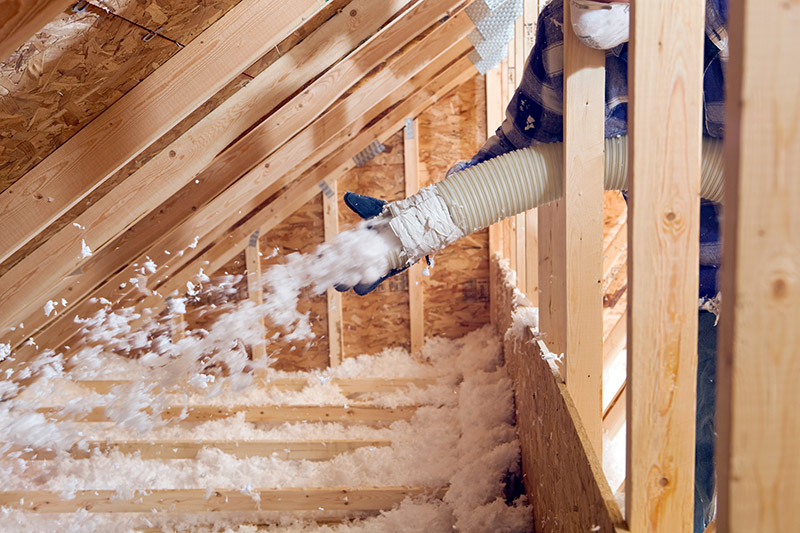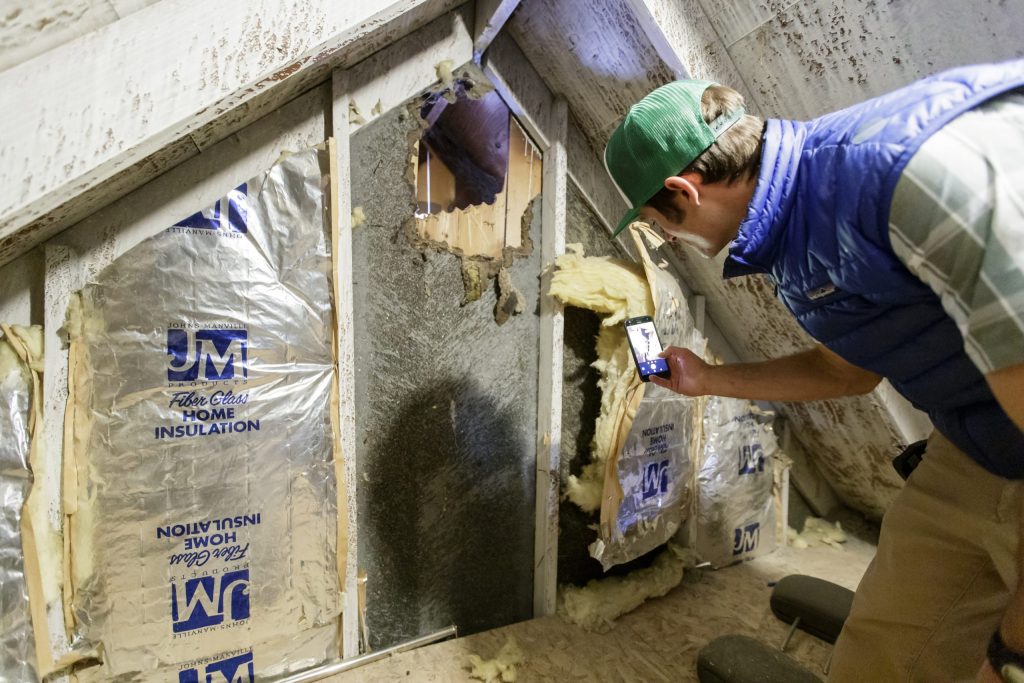
Dear Eartha, I know insulation is something you need in your house to keep you warm. But if I’m being honest, I don’t even know what it looks like. What exactly is this stuff and why is it so important?
“I absolutely love my insulation!” is not something you hear too often. Despite not having that “new car” kind of appeal, insulation is everywhere and definitely worth knowing about. Take your winter coat or sleeping bag, for example. Without quality insulation, these key pieces of outdoor gear wouldn’t do you much good when the weather turns chilly.
Insulation is also paramount in our buildings. This hidden layer found in every part of a building, like walls, ceilings, and attics, is a crucial element that creates a boundary between us and the variable (and in Summit County, often cold) outdoor environment. So anywhere your home meets the outside, you’ll need insulation to keep you warm in the winter and cool in the summer.
How insulation works
Consider your sleeping bag again. The reason it’s so warm inside, even when temperatures drop, is because it creates an enclosed, puffy layer of air all around you. If you don’t zip it up, or if for some reason the bottom was cut away allowing air in, it wouldn’t be a very comfortable night.
Insulation in your home works the same way. It traps heat indoors by creating a layer that prevents warm air from moving through your exterior walls. This is also why it’s important to seal up leaky places in your home, too. They’re like the hole in your sleeping bag that lets all the warmth out.
Types of insulation
Insulation comes in many varieties. Batts are the most common form of insulation in existing buildings. No, these are not the nocturnal flying mammals. This kind of batt looks like a large block or roll of insulative material that is generally cut to a specific size to fill a cavity, such as a wall. Insulation also comes as loose-fill, which, as the name suggests, is simply bits of loose material blown into larger spaces like an attic. There are also multiple varieties of foam insulation. You will generally see these as either spray foam or solid foam board. Spray foam is excellent for filling small cavities or gaps, while foam board is versatile in its ability to be cut to specific shapes. If you’ve ever driven past a home under construction and noticed blue or green panels on the outside, that’s foam board.

What is insulation made of? Batts are commonly fiberglass or mineral wool. Cellulose, like tiny pieces of shredded paper, is common for blown-in applications. And the foam is a mix of chemicals that expand and harden when sprayed on a surface. Each type of insulation has pros and cons, and all have important safety considerations when handled.
R-value
R-value measures how well insulation does its job. It represents the amount of heat that can move through the insulative material. The higher the R-value, the less heat transfers through it. That’s really what we’re after when it comes to insulation — you want the heat to stay in your home and not dissipate through your walls. There are recommended R-values for the different elements of a building. For example, in our climate, exterior walls should have at least R-21 and attics R-60.
Proper installation matters
To work effectively, insulation must be installed right. If installed improperly, or if the wrong combination of materials is used together, more heat could escape and you might also get moisture buildup in your walls. This can cause major health and safety hazards because it can lead to durability problems in the building, mold, fungus, and other risks. That’s why it’s always a good idea to hire a trained professional to advise on what materials to use and ensure a quality installation.

Wondering about your home? Do you know what insulation you have and if it needs to be improved? Find out by getting a home energy assessment with a building performance expert who can tell you exactly where, how much, and what kind of insulation you currently have and recommend ways to improve your indoor comfort. Then maybe you’ll be the one telling your friends, “I love my new insulation!”
